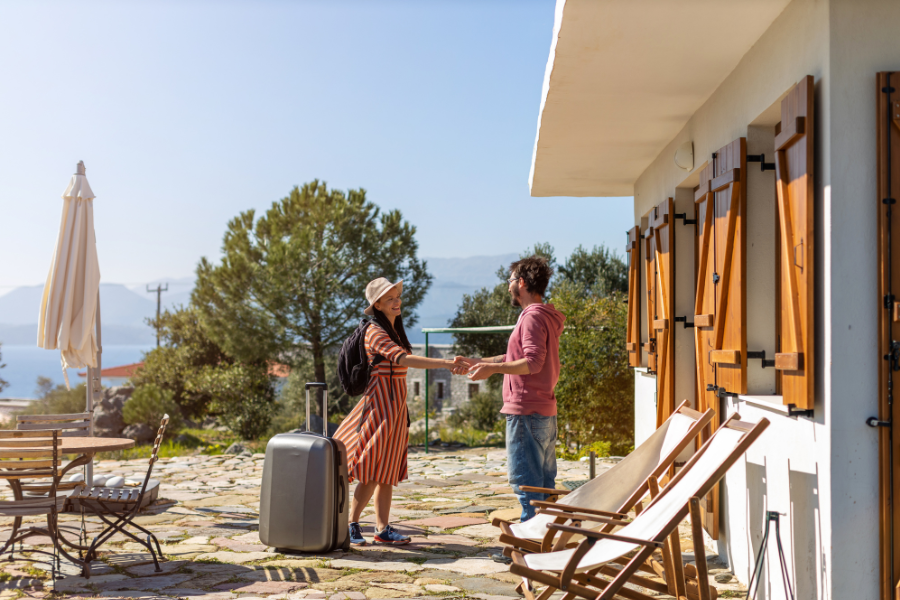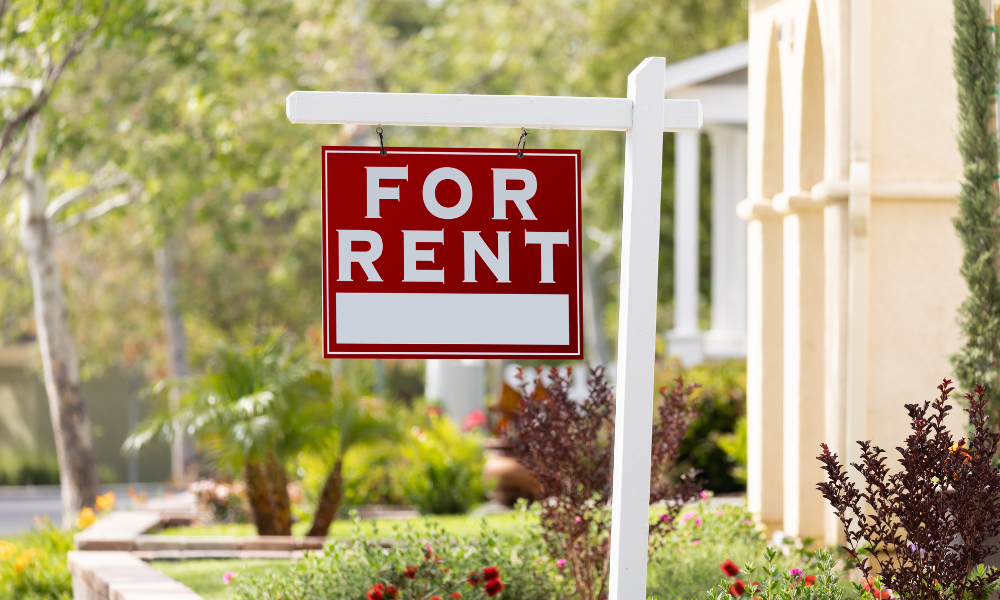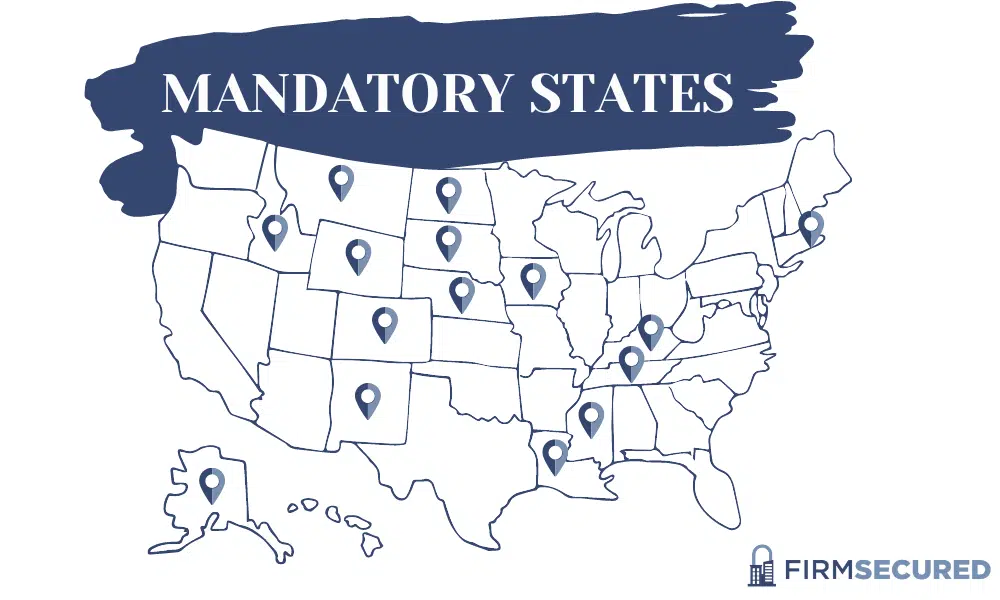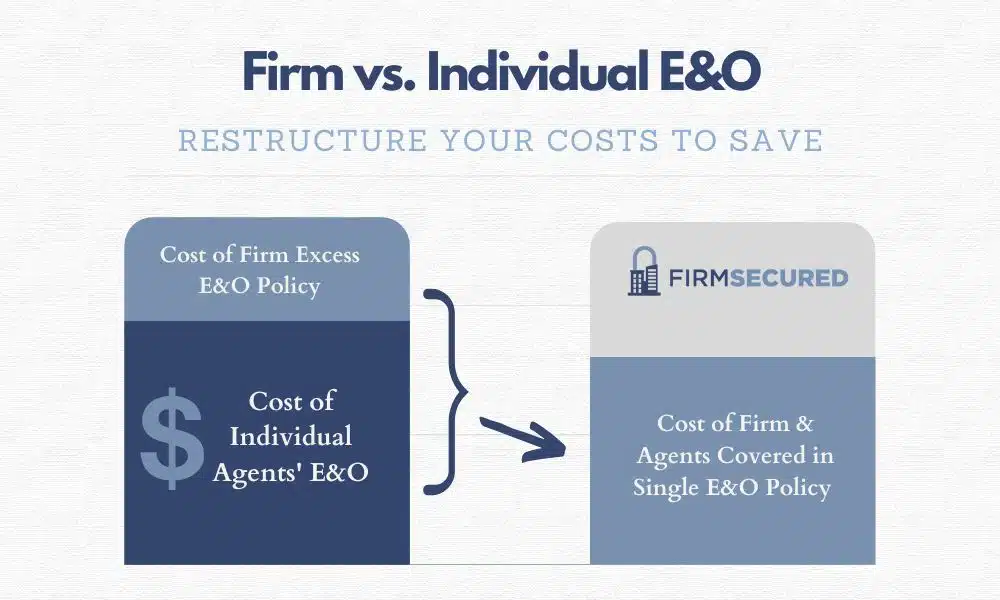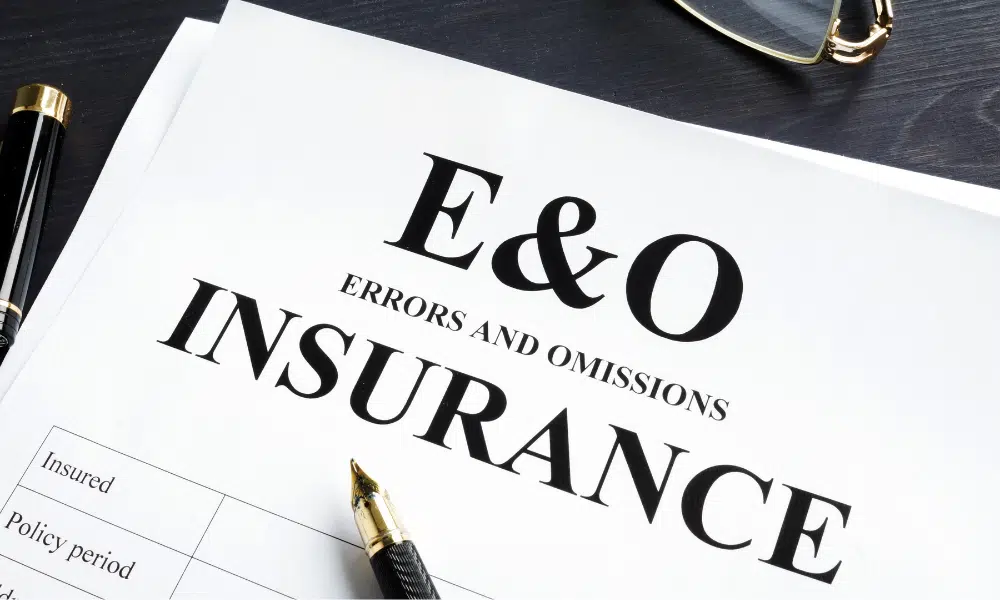Table of Contents
Errors & Omissions Insurance: What is it?
Property management businesses face unique challenges when securing the right insurance, especially E&O coverage. This type of policy, also called professional liability insurance, shields businesses from claims arising from errors, missed details, or negligence during their work.
Professionals like property managers, real estate agents, architects, attorneys, tech firms, and healthcare providers actively rely on E&O insurance to protect their operations and financial stability.
Why do Property Managers Need Professional Liability Coverage?
Property managers operate in a challenging industry filled with responsibilities and potential risks, where even a small mistake can lead to significant consequences.
That’s where errors and omissions (E&O) insurance becomes invaluable. E&O insurance, also known as professional liability insurance, offers protection against claims stemming from errors, negligence, or oversights in a property manager’s professional services. This coverage is essential, as a single claim could result in overwhelming legal expenses and financial losses.
Property managers often juggle tasks like screening tenants, managing rental agreements, coordinating short-term rentals, commercial leasing, overseeing property maintenance, and ensuring compliance with housing laws and community regulations. Even with meticulous attention to detail, disputes can arise.
A tenant might allege that a property manager failed to address critical repairs, misrepresented lease terms, or neglected to provide necessary disclosures. E&O insurance steps in to cover legal defense costs and any settlements or judgments, helping property managers avoid devastating financial impacts.
Beyond financial protection, this coverage safeguards the reputation of property management businesses, ensuring they can continue serving clients with confidence even in the face of claims.
How Much Does E&O Cost for Property Management Firms?
The cost of E&O insurance for property managers varies based on several important factors. Let’s break these down in more detail.
Two primary types of E&O coverage exist: individual policies and business-wide coverage for real estate or property management firms.
- Individual E&O policies for property managers typically range from $115 to $700 annually, depending on the services provided and the coverage limits, and only cover the individual. Watch out, because many individual policies only cover property management activities if you buy an additional add-on.
- Firm-wide E&O policies, designed to cover all employees and operations within a property management company, often calculate premiums based on the company’s annual revenue or management fees.
Additional factors, such as the firm’s history of claims and any added coverage endorsements, can further influence the cost of a policy. Understanding these variables helps property managers choose the right coverage to protect against potential liabilities while aligning with their budget and business needs.
E&O Coverages Most Property Managers are Missing
Many property managers, when shopping for E&O insurance, mistakenly believe that all policies are created equal.
In reality, this type of coverage is highly specialized and varies greatly depending on the provider and policy details.
Let’s focus on a few of the most common exclusions that often catch property managers, HOA managers, vacation rental companies, and full-service real estate agencies off guard.
Bodily Injury & Property Damage Coverage
Most E&O policies for property managers come with extensive exclusions for Contingent Bodily Injury and Property Damage (BI/PD). We delve deeper into this issue in our blog on how property managers can protect themselves from BI/PD claims.
In simple terms, this means if a tenant or guest gets injured due to a safety hazard at a property you manage, if a vacation rental guest falls ill from undisclosed mold, or if an HOA member’s pet causes damage or harm, your E&O policy might not cover you!
This risk is especially significant for property managers, HOA managers, and vacation rental management companies.
Regardless of the type of property, these professionals face potential liability from claims that may not be included in standard E&O policies.
The Insurance Journal highlights how this issue spans multiple industries, underscoring the need for robust E&O coverage as bodily injury claims rise. Some E&O policies offer limited BI/PD coverage, such as incidents at open houses or those involving specific situations like lockbox issues.
However, top-tier E&O policies go further by providing broader protection with full policy limits for a wide range of bodily injury and property damage claims, ensuring property management businesses are well-prepared for unexpected liabilities.
Discrimination/Fair Housing Coverage
E&O policies often include coverage for fair housing violations, but it’s crucial to recognize that many policies place restrictions on this type of claim. Be sure to check the sublimits in your policy, as limits of $100,000 or $250,000, instead of your normal limit of coverage, are not uncommon.
While fair housing violations are generally more likely to be covered than bodily injury claims, limited coverage can still pose a financial risk for property managers and HOA managers. Carefully reviewing your policy ensures you’re adequately protected against these potential liabilities.
Copyright, Trademark, & TCPA Coverage
Most property management E&O policies exclude coverage for copyright, trademark, or violations related to the Telephone Consumer Protection Act (TCPA).
These gaps can leave property managers exposed to costly claims. At FirmSecured, we partner with select insurance providers that offer protection for these specific risks.
For example, copyright issues—such as unauthorized use of marketing photos—are increasingly common in the real estate industry.
Additionally, some cyber liability policies may include limited coverage for copyright-related claims, offering another layer of protection for your business.
Management of Owned Properties
Many property management E&O policies include significant exclusions when it comes to properties owned by the management firm, its employees, agents, or a related entity. If you manage properties you or your team own, it’s critical to understand how these exclusions can impact your coverage.
The most comprehensive E&O policies may provide protection for transactions involving properties owned by someone within the firm. However, to ensure coverage on those policies, it’s necessary to run these properties and transactions directly through the firm.
Keep in mind, there are also often gaps for real estate transactions where you are buying or selling property in which you have ownership interest as an agent. So if you are doing real estate deals too and want to learn more about these coverages, check out our blog on agent-owned E&O coverage for real estate.
Deductible Waivers
Some comprehensive E&O insurance policies for property managers offer deductible waivers, which can significantly reduce out-of-pocket costs when a claim arises. These waivers often apply if you’ve followed specific risk management protocols for the transaction in question, potentially saving your business thousands of dollars.
To dive deeper into how deductible waivers work and their benefits for real estate brokers/property managers, check out our article, “E&O Deductible Waiver: What Real Estate Brokers Need to Know.”
Defense Costs
Most professional liability policies for property managers cover defense costs, but the way this coverage is structured can vary significantly—and not always in your favor. For instance, some policies count defense expenses toward your total liability limit.
This setup reduces the funds available to pay settlements or judgments. On the other hand, more robust E&O policies offer a separate limit specifically for defense costs, ensuring better overall protection.
To understand how this distinction could save property managers substantial amounts of money, check out our article, “Defense Costs: Inside or Outside the Limit?”
Top Claims Examples for Property Managers' E&O
One of the most common claims property managers face involves bodily injury or property damage (BI/PD) claims. For example, a tenant might claim they were injured due to unsafe conditions at a property, such as a broken staircase or inadequate lighting.
Similarly, damage to tenant belongings caused by a maintenance oversight can also result in professional liability (E&O) bodily injury or property damage claims.
Another frequent issue is allegations of discrimination under fair housing laws. Whether it’s a tenant claiming unfair treatment during the application process or accusations of unequal access to property amenities, these claims can be costly and damaging. Ensuring compliance with fair housing regulations and maintaining detailed records can help reduce this risk.
Property managers must also stay vigilant about timely reporting of potential E&O claims. Missing the reporting deadline outlined in your policy could lead to claim denial, leaving your business exposed.
Do Vacation Rental Management Companies Need E&O?
Vacation rental management companies face unique challenges that differ from those of HOA management, commercial property management, or long-term residential managers. The nature of short-term rentals creates distinct risks, so E&O insurance is an essential for these businesses.
One common E&O issue for short-term property managers involves bodily injury or property damage (BI/PD) claims. For instance, a guest get injured due to unsafe conditions, such as a loose handrail or slippery flooring in a rental property.
While general liability (GL) insurance addresses many physical injury or damage claims, E&O insurance covers claims tied to professional errors, mismanagement, or oversight—areas not included in standard GL policies.
Another frequent risk comes from local and county regulations governing short-term rentals. Laws on whether a property can legally be used for short-term stays often vary by location and change over time.
Vacation rental managers who fail to stay compliant or misrepresent a property’s zoning or licensing status to owners or guests could face legal and financial repercussions.
E&O insurance provides vacation rental managers with critical protection against these types of claims, helping to cover defense costs and settlements.
Firm vs. Individual E&O Coverage
Firm Coverage
Its important to understand the differences between firm-wide, individual, excess, and group E&O insurance.
To help clarify, we’ve published a blog breaking down real estate firm vs. individual E&O policies, and this applies to property managers as well. Here’s a quick overview.
A firm E&O policy provides coverage for the property management or real estate entity itself, as well as all employees, independent contractors, and agents for covered professional services performed on behalf of the firm.
This means that everyone within the organization is protected under a single policy for professional services tied to the company.
Firm policies are especially popular in states that do not mandate E&O insurance, like North Carolina, Utah, Texas, and Wisconsin, but are also common in states like such as Colorado, Tennessee, and Kentucky where E&O coverage is a legal requirement.
Typically, these policies offer $1 million per claim in coverage, making them a solid option for property management businesses looking for comprehensive protection.
Individual Coverage
Currently, 15 states mandate that licensed real estate professionals maintain E&O insurance as part of their licensing requirements.
States like Montana, for example, ensure that real estate errors and omissions coverage is available through state-sponsored group programs.
These state programs typically provide coverage on an individual basis, protecting each licensed real estate agent separately. Many of these states will often have an additional add-on or endorsement for property managers.
These standalone policies often come with liability limits starting at $100,000 per claim.
Excess Coverage
An excess policy differs significantly from the standard firm policy discussed earlier.
Think of an excess policy as a layer of additional coverage, similar to an umbrella policy, that kicks in once the limits of the primary, individual policies are exhausted.
Property management firms often invest in excess policies to meet contractual or franchise requirements, which frequently call for coverage limits of $1 million or more. With this setup, the primary individual policies serve as the first line of defense, essentially acting as a deductible before the excess policy takes effect.
Price & Coverage Differences
Many property management professionals and agencies favor firm E&O policies because they tend to offer more comprehensive coverage compared to individual policies.
These policies are particularly beneficial for property management firms, as they address a wider range of potential liabilities under a single umbrella. For companies with multiple team members or managing numerous properties, firm E&O policies often prove to be far more cost-effective than maintaining separate individual policies or layering excess coverage.
This is especially true for larger firms with 10 or more employees, where managing individual policies can become both costly and administratively burdensome.
If transitioning from individual or excess policies to a firm-wide policy feels overwhelming, don’t worry—we’ve created a detailed guide to help property management businesses make the switch smoothly and confidently.
Do Property Management Firms Still Need Cyber Coverage?
Property management E&O insurance policies are not designed to fully address the growing risks associated with cyber threats. While some property management E&O policies may include limited cyber coverage through endorsements or add-ons, this protection is usually narrow in scope.
These endorsements often come with lower coverage limits, typically ranging between $25,000 and $100,000, which may not be sufficient for more significant cyber events like data breaches or wire fraud.
For property managers concerned about cyber risks—such as tenant data breaches—investing in a separate cyber liability policy is a smarter choice.
Stand-alone cyber insurance typically offers broader protection, covering claims up to $1 million, and often costs less than an E&O policy.
Real Estate and Property Management E&O is Specialized & Nuanced
Property management E&O insurance comes with a wide range of complexities and nuances that require specialized expertise to navigate effectively.
Many insurance agents have a general understanding of commercial insurance but may not fully grasp the specific needs and unique aspects of property management E&O coverage.
This lack of specialization can leave critical gaps in your policy, potentially exposing your business to unnecessary risks. Even agents who understand real estate E&O, might not fully understand some of the unique needs of property managers!
It’s essential to work with an insurance professional who focuses on property management E&O policies daily. Look for someone who not only has access to a variety of E&O programs but is also committed to reviewing your current coverage, explaining policy options, and providing tailored recommendations that fit your firm’s unique needs.
If our guidance has been helpful in your search for the right E&O coverage, we would be honored to assist you and your team in securing the protection you deserve.


